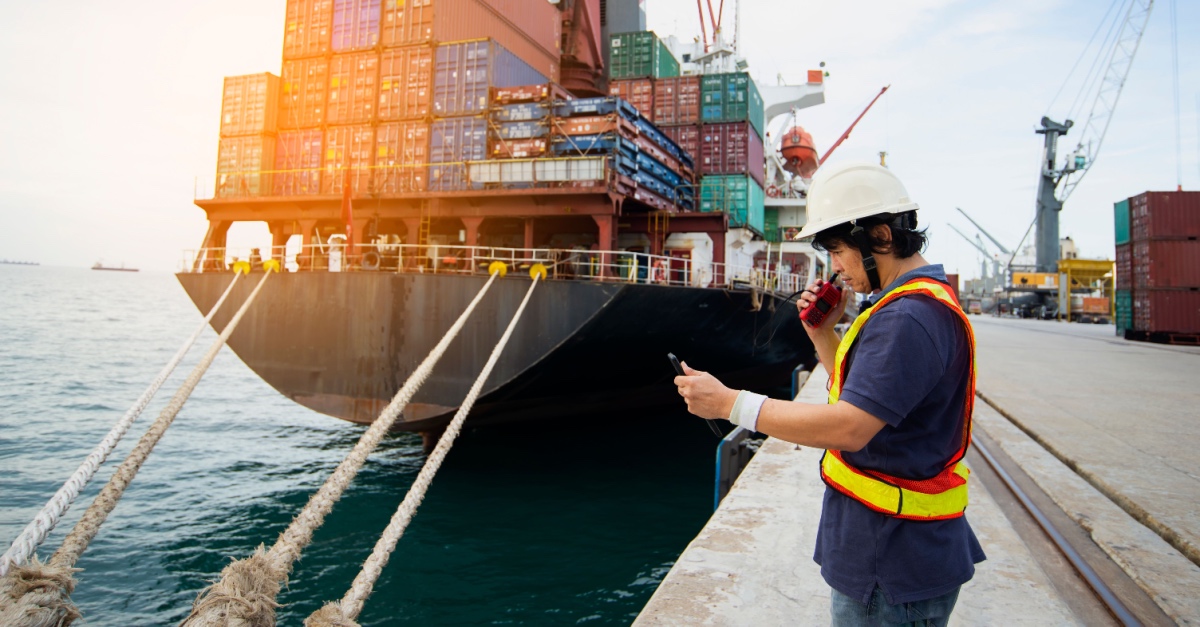The strike by members of the International Longshoremen’s Association (ILA) at U.S. East and Gulf Coast ports has come and gone. It lasted for three days in October until the ILA and the United States Maritime Alliance (USMX) announced on Oct. 3 that they had struck a tentative labor agreement.
As over a third of respondents to a Gemini Shippers’ LinkedIn survey predicted, the strike lasted only a handful of days. However, the recovery may take weeks as cargo chains unravel their Plan Bs and diversions executed weeks in advance.
Work stoppages and strikes may constitute only a small percentage of the disruptions that may occur. However, they remind us that our supply chains should have safeguards to keep operations and networks running smoothly. At Gemini Shippers, we help companies huddle and determine the best practices for ensuring a durable supply chain.
Crisis Averted, But Trouble Still Looms
The work stoppage by ILA members at East and Gulf Coast ports occurred from Oct. 1 to Oct. 3. ILA members walked off the job shortly after midnight on Oct. 1. The ILA and the USMX, which represents terminal operators at East and Gulf Coast ports, had failed to reach an agreement for a new labor contract to replace the one that expired on Sept. 30.
Two big issues were automation and pay increases. On Oct. 3, both sides announced that they reached a tentative wage deal and decided to extend the master contract until Jan. 15, 2025.
While a lengthy strike was averted, importers and forwarders were still left to manage issues like cargo discharged at alternative ports, determining how and where to pick up their cargo and delivery to their final destinations. Furthermore, the ILA and the USMX still need to grapple with how to handle other pending issues, especially the use of automation. The ILA is wary that terminal operators will find some way to increase the use of automation or semi-automation in operations. At the same time, the USMX argues that what has been in the master contract regarding automation should continue to stand. If the two parties can’t agree on these issues, the possibility of a work stoppage in January once this contract extension ends is still on the table.
One thing we can be sure of, though, is that companies were very well aware that a work stoppage or disruption of such magnitude — estimates varied widely, but the cost of the strike to the U.S. economy ranged anywhere from over $3 billion per day to over $3 billion per week — could easily cripple cargo operations if companies did nothing to prepare in advance.
Gemini Shippers Spot-On with Prediction
In a late September Gemini Shippers LinkedIn survey to assess businesses’ views of the then-impending strike, a whopping 96% anticipated that a work stoppage would occur at East Coast and Gulf Coast terminals come Oct. 1. Of that figure, 8% predicted that the strike would last a long time, while 36% predicted it would be of short duration, and 52% thought the U.S. government would intervene, potentially under the Taft-Hartley Act.
The survey results mean that the work stoppage was very much on companies’ minds – and even though the strike lasted only three days, its ramifications will take weeks to unravel, as we mentioned last month in our blog post discussing both the East and Gulf Coast port strike and the averted strike between the Teamsters Canada Rail Conference and Class I railways Canadian Pacific Kansas City and Canadian National.
Indeed, the impacts of even just a three-day work stoppage are many: not only was there cargo backup on the East Coast and Gulf Coast ports, but there was also a backlog of shipments on West Coast ports in part from companies diverting cargo from the East and Gulf Coast ports. That cargo diversion to the West Coast also created an imbalance with empty containers at the ports. To add insult to injury, there has also been inland congestion and limited equipment availability in the U.S. Southeast, which was rattled by Hurricane Helene in western North Carolina and eastern Tennessee.
With all these impacts, it’s easy to see that businesses need to develop contingency plans and Plan Bs to ensure that operations can keep humming so that companies can meet their clients’ transportation and logistics needs.
With Further Labor Trouble Possible in the New Year, Shippers Look to Build Resilience
We’ve seen that the three-day strike can result in significant operational impacts on logistics. So, how does a business prepare for a contingency plan? At Gemini, we’re here to guide companies through just that by creating a more resilient plan that uses technology supported by staff with years of experience.
Diversified Transportation Networks
Gemini assists shippers in establishing a diverse network of transportation partners, reducing reliance on any single carrier or port. This diversification allows shippers to adapt quickly to labor disruptions, ensuring that alternative routes and logistics options are readily available, minimizing delays, and maintaining supply chain continuity.
We also offer opportunities for shippers to combine volumes via our role as a shippers’ association, which provides companies with access to more flexible and competitive ocean shipping options. Our procurement experts secure fixed-rate ocean contracts with over 14 global ocean carriers, securing the optimal solution for each member based on their individual route and service requirements.
Advanced Risk Management Insight
Gemini provides comprehensive risk management insight that helps shippers identify and prepare for potential supply chain disruptions. Shippers can develop robust plans to mitigate risks through scenario planning, contingency strategies, and proactive communication, enabling them to respond effectively to unforeseen labor challenges and maintain operational stability.
Employing advanced risk management tools, such as our innovative procurement strategies, can also help shippers manage the impacts of volatility in container shipping rates by providing some visibility into the factors influencing container rates.
Real-Time Monitoring and Analytics
With access to Gemini’s digital solutions, shippers can utilize real-time tracking and monitoring tools to gain visibility into their shipments and supply chain operations. This enhanced visibility allows for the timely identification of disruptions, enabling shippers to adjust their logistics plans and communicate effectively with partners, thus minimizing the impact of labor issues on their operations.
Our members have access to our proprietary Member web portal, which provides real-time information on the factors and conditions that may affect your shipments.
Learn More About All That Gemini Has to Offer
Billion-dollar-a-day work stoppages and other disruptions, such as severe weather-related events, can shock almost any supply chain, from the biggest companies to the small mom-and-pop businesses. Creating contingency plans and Plan Bs can also be daunting as so many factors go into creating smooth supply chain network flows.
However, shippers don’t have to go at it alone. By working with a shippers’ association such as Gemini, they can leverage technology and experience that might not be so readily available if they were working solo. While we’ve mentioned our unique procurement strategy above, we have other services that shippers can and should take advantage of, such as strategic partnerships with drayage providers, software solutions, sustainability tools, and payment solutions — as well as access to our retained customs and transportation attorneys.
Don’t wait another day to make sure your contingency plan is failsafe. Contact Gemini Shippers today to learn how you can join us.



